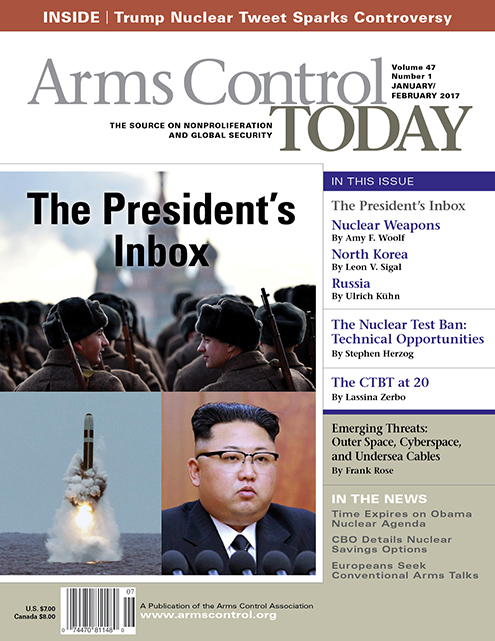"I find hope in the work of long-established groups such as the Arms Control Association...[and] I find hope in younger anti-nuclear activists and the movement around the world to formally ban the bomb."
January/February 2017
January/February 2017
Edition Date
Cover Image

Authored by on January 12, 2017
Authored by on January 11, 2017
Authored by on January 11, 2017
Authored by on January 11, 2017
Authored by on January 11, 2017
Authored by on January 11, 2017
Authored by on January 11, 2017
Authored by on January 11, 2017
Authored by on January 11, 2017
Authored by on January 11, 2017
